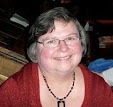While I was about the main character, Lora Llera's, age in 1961, I was totally unaware of the political upheaval in the island nation just south of the United States. Paterson addresses the fall of the Batista regime and the rise of Castro and his communist agenda in this novel. It is told through the first person of Lora who, against her parent's objection, joins the Literacy Campaign as a brigadista. They were a group of school age students, ages 10-19, who would travel to the remote countrysides to educate those persons who could not read or write. It was Castro's belief that
"in order to become a strong nation, we needed strong citizens. And to be a responsible citizen, you must know how to read and write."After she is accepted into the program, Lora heads out with thousands of other "teachers" to the country, a far cry from the life she lives in Havana. With her hammock, gas lantern, and 2 sets of uniforms, she is placed at the farm of the Santanas where Luis and his family are desirous of attaining literacy so that they could sign their names instead of just making a mark or affixing a thumbprint. She also convinces a neighboring family to join in on the lessons. She also develops a friendship with fellow brigadistas, Marie and Enrico. Part of the program is that the brigadistas will live with the family and work side by side with them. Of course there are dangers in this situation, also, as not all of those associated with the Batista regime have given up. There are still some hidden in the mountains and country that had no compunction about murdering the young teachers.
The novel is enlightening and Lora endearing. It is told in Paterson's captivating style with strong character development. The diary format keeps the reader engaged until the end with an epilogue about Lora's adult life. Without entering a political foray, My Brigadista Year, provides some insight into the nascent days of the Castro rule. This is a wonderful read and could be used in a middle school setting to further understand the events of the early 1960s. Paterson never disappoints.














